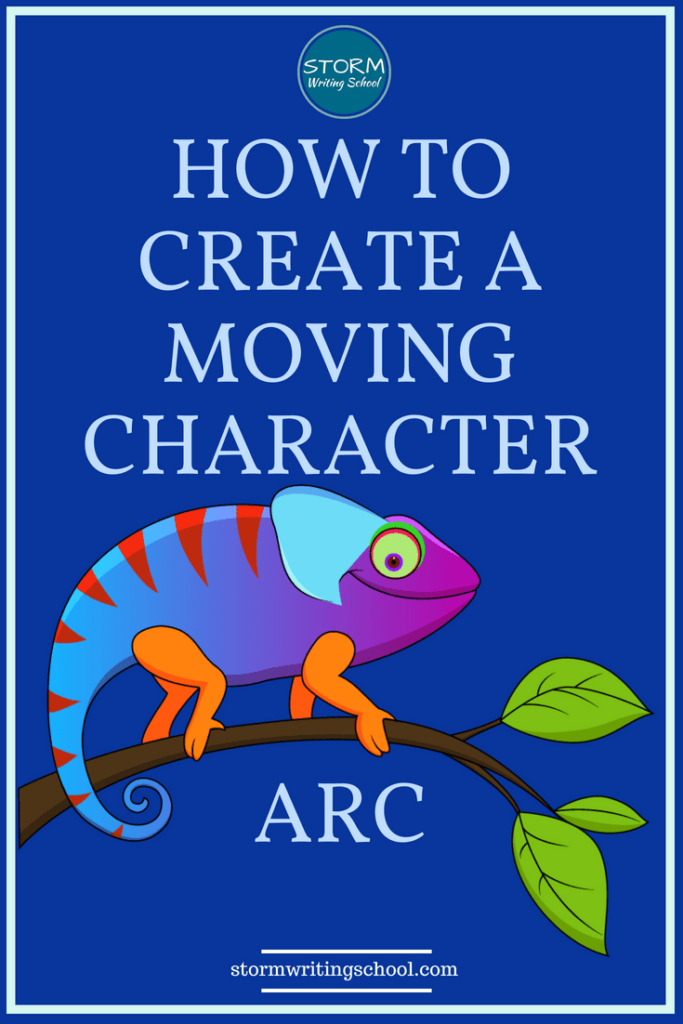Character arc (aka the internal plot) is essential for a satisfying story structure. You might have tension on every page and you might follow what you think is a winning structure, but if you don’t have a character arc, your story will fail to resonate with readers.

Story Elements -> Structure -> Character Arc
You’ve got a story in which a main character takes action to pursue a goal and faces conflict. That’s the basic engine. Desire + conflict produces the stuff of story. (Take my 5 Key Elements class for a primer on the necessary ingredients for a story.)
But you want some shape to that “stuff” because a story’s shape (and finiteness) brings about closure and helps us feel that we can take something away. A lesson, a message, a feeling. It doesn’t need to be a pat, easily articulated lesson. But it’s a lesson nonetheless.
So your story needs a beginning, a middle, and an end. And if you’re writing longform story, you’ll probably want several supporting pillars holding up that edifice, which you can read about at my post about aggregate novel structure. (And/or you can consult my list of resources on novel structure and do your own homework.)
Now, most of the novel structure paradigms I’ve researched do discuss the character’s internal arc to at least some extent, so it’s not as though external paradigms foresake the internal development of your main character. But I want to isolate the character arc question for the sake of today’s discussion. Because if you want an emotionally moving story, the character arc (aka the internal plot) is the key.
Character arc = transformation
Character arc is about transformation. It need not be a positive transformation. And heck, in some cases, the main character doesn’t transform much, but the world around him does. Regardless, the backbone of the character arc is movement from one state to the next. From selfishness to self-sacrifice; from ignorance to enlightenment; from innocence to pain; from hope to despair; from despair to hope.
The events of the story have delivered the main character to a new place (metaphorically, at least). In my previous blog post on the roles of the beginning, I talked about how the structural role of the beginning of the story is to show us the pre-shift state—the state of mind the character is in prior to the events of the story, which, gradually at first and then forcefully and urgently later on, move him toward a new state.
Character arc is all about that movement.
Point A and Point B
How should we think about that movement? What is Point A and what is Point B? Here are a few paradigms for you:
John Truby talks of movement from need to self-revelation. “The need is what the hero must fulfill within himself in order to have a better life.” And “self-revelation is the moment when the hero grows as a human being (unless the knowledge is so painful it destroys him).”
Lisa Cron frames the overall character movement as misbelief to “aha!” moment. “What keeps your protagonist from nailing his goal without breaking a sweat is a deeply lodged misbelief that’s been tripping him up for years. ” Later, the character must have an “aha!” moment: “the ending we’re looking for . . . isn’t just about what happens plotwise—it’s about what your protagonist realizes as she faces it head-on.”
Michael Hauge talks of identity and essence. In the beginning, the main character has a “persona or mask” he “presents to the world to feel safe.” That is his initial identity, and it’s born from past wounds: “When characters are traumatized by these experiences, they formulate beliefs about the world that will protect them from ever again experiencing the pain of those wounds.” But over the course of the story, “they will come to realize the truth of who they are underneath their masks.” Hauge terms this the “essence.”
As you can see, all of the above use different language for the same base concepts, right? The character begins with misbelief, false identity, need. We can throw all this into a stew called the Character Problem and it’s parallel to the Foundational Problem I discussed in my previous post. The character has this problem on page zero. She enters the story with fears and flaws and misbeliefs and weaknesses and needs.
Beats
Much of the first half of the story will showcase your main character’s Character Problem. And then, various key plot points will put increasing pressure on the MC to become aware of that problem, to see it clearly, to face it, and then to overcome it or else.
I’m hesitant to get formulaic about anything, so I don’t believe there’s an obligatory progression of beats you need to tick off in the character arc, but I offer a sample series of beats not as a formula but as a launching point for some important concepts.
1. Character Problem: this I’ve already defined. In the “normal world” as depicted in the story’s beginning, we come to know a main character who has some fears and flaws that need fixing.
2. Pressure on comfort zone: usually associated with an inciting incident, this beat doesn’t necessarily push the MC out of the comfort zone, but applies some pressure. That comfort zone is Hauge’s mask or persona; the Character Problem is so much a part of the MC’s identity that he’s complacent and comfortable in living with it.
3. Push out of comfort zone: an emotional hurdle that pushes the character into the unknown. Usually associated with the end of Act 1—the threshold or door that the MC enters, not to return.
4. The mirror: though the MC won’t yet have the strength or resources to overcome her fears and flaws, here, the seed of self-awareness is planted. The MC begins to see her own flaws.
5. Exposure: that seed grows and now the MC sees her fears and flaws fully. The lie or misbelief is now exposed. It’s now clear that the MC cannot achieve her desire unless she faces the lie. She doesn’t yet face it; it’s just been made clear that she needs to.
6. Change or die: a further escalation of the need to change. The Character Problem has been exposed, but it’s now clear that the consequences of not facing that problem head on will result in some kind of death (perhaps not physical).
7. Face the problem: It’s not just that the MC now knows the necessity of facing the problem; she has to unearth what lies beneath the problem. This is hard. Usually, this point is associated with a climax or immediately precedes a climax.
8. Put truth into action: in the climax or immediately following it, the MC needs to apply the new lessons about his “essence.”
9. Make amends: often associated with the resolution, this beat is about living the truth and trying to right past wrongs.
By the way, the above was actually the internal arc I found within Varya’s story from Chloe Benjamin’s The Immortalists, a book that serves up four character arcs and thus makes for a great study of internal plots. Far and away, Varya’s internal arc was the most satisfying (even if she wasn’t necessarily the most likable character).
The Takeaways
Again, I want to emphasize that this is not a formula. (For an alternate list of beats, see Kristen Keiffer’s post at well-storied.) The important takeaways are:
Progression
The character moves from Point A to Point B, from a pre-transformation to a transformation. That shift is essential for all stories.
Revelation
That shift usually entails movement from lie to truth. That is, the internal arc is all about revelation and enlightenment. The character comes to a new understanding by the story’s end.
Escalation
Note the subtle upward steps in the beats I’ve listed above? Pressure on comfort zone becomes push. We move from beginning to see flaws to seeing them clearly to understanding that something must be done to doing something. Whatever beats you come up with, they just need to include a leveling-up of the intensity of the need for change.
Interaction with external plot
Do not have this internal arc happen in a vacuum. Always, the internal is a response to the external. An external plot without internal movement will feel empty; an internal arc without external pressure will feel abstract and heady, and will ultimately be forgettable.
This article is part of the Author Toolbox Blog Hop. To continue hopping through other great blogs in the monthly hop or to join, click here and/or search #AuthorToolboxBlogHop on Twitter and Pinterest (here’s the group board).
SaveSave
SaveSave
SaveSave
SaveSave
SaveSave








16 Responses
Fantastic article. I was trying to check off points regarding my current story. I do think I’ve done something interesting for character arc this go-round. The character faced her new reality right before the climax, which I’m currently writing. I’m still deciding how to wrap up the character arc. I don’t want it to be so easy, because it’s a tough reality to face for her.
Thanks, Raimey. Writing the climax is a lot of fun, isn’t it?
Great rundown of story structure! It’s refreshing to have these mile markers explained in an accessible and easily understandable format. I was thinking about my book and whether I’d hit each item you include here, while I was reading. Although I’m aware of each of these components, it’s hard to keep them all straight, and certainly, to assess whether I’ve handled each the way they deserve – reading your post allowed me to check in. Thank you for sharing!
Thanks, Elle! I’m glad you found it accessible.
Excellent post! I love the arc of “need to self-revelation” because that so often mimics real life.
Yeah, I find they all mimic real life to some extent, but Truby makes a very compelling case for his weakness/need/action/change/self-revelation concepts.
I have all the Save the Cat books, and love the idea of story arcs, character arcs, location arcs etc.
Thanks for the tips. I just signed up for your newsletter.
Thanks, Kristina!